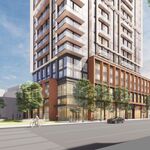Stand by for a mega moving day
Record 47,000 new condos about to come on stream in Toronto
Terrence Belford
The Globe and Mail
Published on Thursday, Dec. 17, 2009 11:24AM EST
Last updated on Friday, Dec. 18, 2009 7:33AM EST
The next two years promise to reshape the look and feel of the Greater Toronto Area in ways probably not felt since the building boom of the 1970s. Then, we went out. This time, we are going up.
At the same time, the Toronto area is about to have its own exodus – inward not out.
Quiet suburban neighbourhoods are about to vibrate with new life. Old, once-neglected industrial areas in the city core are about to be transformed into mini-villages.
Record condo sales in 2007 and the early months of 2008 are about to be translated into move-in dates.
In the GTA's best years, about 15,000 condo units become available for occupancy, says George Carras, president of RealNet Canada Inc.
Over the coming two years, Mr. Carras predicts we will see about 47,000 new condo suites become available to their owners – 27,000 of them next year.
Ben Myers, executive vice-president of Urbanation Inc., is more conservative in his estimates. He says the Metro Census Area will see about 17,000 new condos finally occupied in 2010, and 19,000 reach the same stage in 2011.
(A word of explanation here. RealNet tracks the GTA, which is larger than the CMA because it includes cities like Burlington and Oshawa. Mr. Carras says his 2010 figures represent 114 projects, which builders say will be ready for occupancy during the course of that year. Mr. Myers says the CMA area has 84 projects expected to be in the same condition.) Numbers aside, what they do agree on is that the next two years will not only see neighbourhoods such as downtown west, the Sheppard corridor, North York west and Mississauga city centre become heavily populated, but also experience an economic and business boom.
“There is going to be an enormous surge of new life in many areas of the GTA,” says Barry Lyon, president of N. Barry Lyon Consulting Ltd. “Residential drives retail, so that means the influx of all these people will spark a whole wave of new retail and service businesses in those areas.
“It will also be a boom time for moving companies, furniture stores, hardware stores – even dog-walking services. People moving into new homes need all these things, and when they are concentrated into specific neighbourhoods you can be certain business in those neighbourhoods will boom.”
The importance of this great migration cannot be underestimated, all three men say.
Take the availability of rental suites downtown and the price you have to pay for one. Mr. Lyon suggests that up to 40 per cent of the new condo suites will be investor-owned and immediately put on the rental market.
That means almost 19,000 new suites will become available by the end of 2011. Right now, the vacancy rate for downtown condos is at or less than 1 per cent, Mr. Myers says. The new suites will not only ease the shortage, but also see landlords competing for tenants.
“That will likely mean rents may even ease somewhat in the shorter term,” Mr. Myers says.
Major retail chains are already taking note of the demographic shifts and planning new outlets to meet the needs of new residential populations, Mr. Carras says.
“Companies like Pizza Pizza track housing trends carefully and base their trading areas for each new location on what they see happening,” he says. “You can bet they are already planning new outlets in places like downtown west and along Sheppard in North York.”
Mr. Lyon says supermarket chains are masters of demographics-based planning. He points to the new Sobeys on Bremner Boulevard near the Rogers Centre as an example of new-format supermarkets to serve new high-rise neighbourhoods.
“What is also going to change is the ethnic makeup of many neighbourhoods,” Mr. Lyon says. “Many of these condos were bought by new Canadians, so you are going to see much more diverse, multicultural neighbourhoods created.”
But what all three also say is that the shape-shifting of the GTA is going to create significant new challenges.
One is an ever bigger shift to singles and couples and away from families in new high-density neighbourhoods. Condo suites large enough to accommodate growing families are far too expensive for the average family budget – even if builders were building them, Mr. Lyon says.
Another will be public transit.
“The TTC's planning still lags far behind need,” Mr. Lyon says. “The [Toronto] Transit Commission is planning stops where there is no population, and its response to rising costs of operation is to raise fares. Every time it does that it loses riders.”
Special to The Globe and Mail




